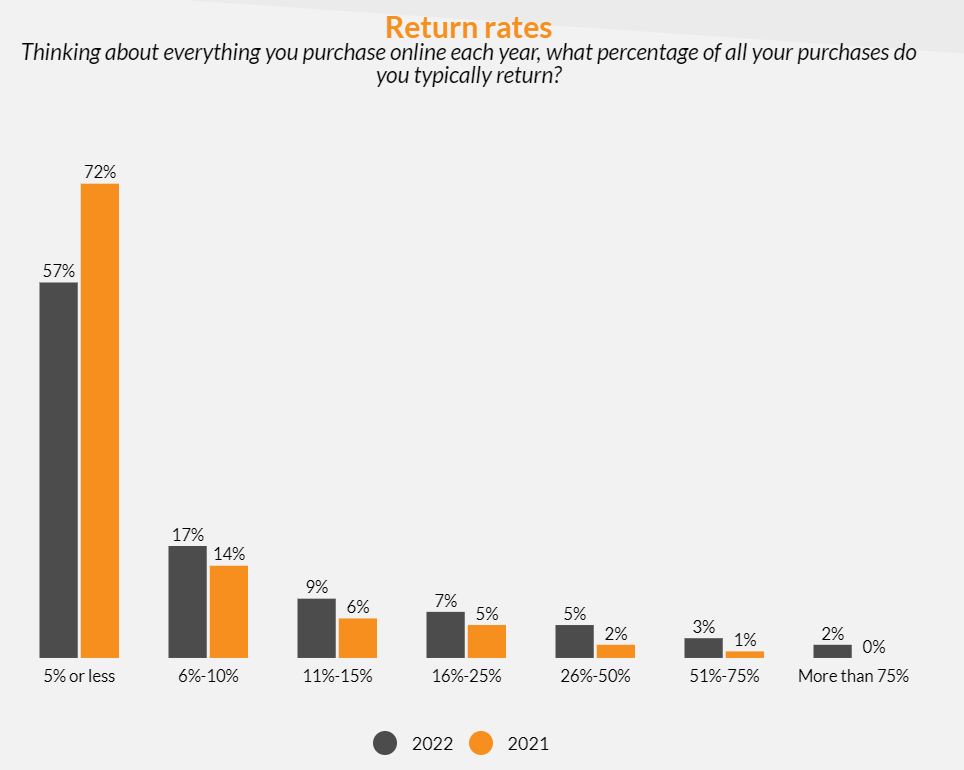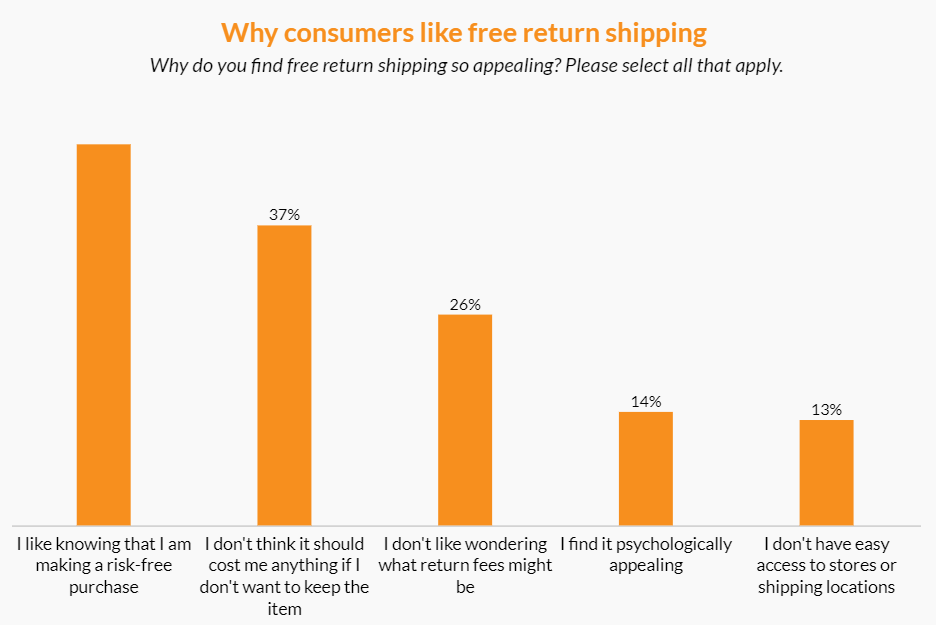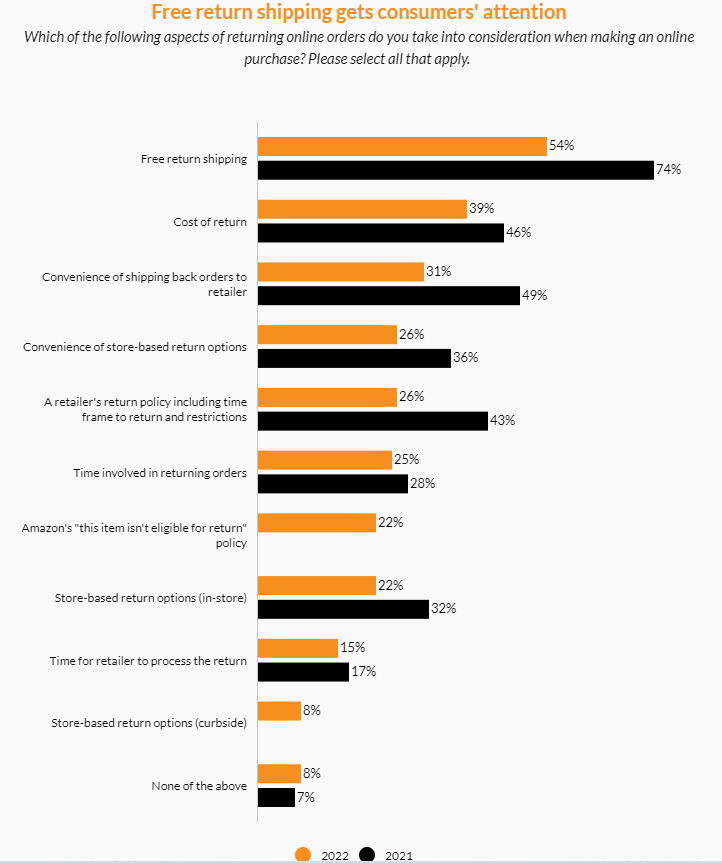According to data from the National Retail Federation and APPRISS RETAIL, the value of US return goods in 2021 exceeded US $ 761 billion, accounting for approximately 16.6%of the total US retail sales. Digital Commerce 360 and Bizrate Insights conducted an annual return investigation of 1098 online shopping consumers in August 2022 that the return rate of 57%of online shopping buyers was less than 5%, but overall, consumer returns showed an upward trend:

When asked about the expected return of the 2022 return, 51%of the shoppers said that this year's return volume will remain the same level as last year. 24%will reduce the return, and only 11%of people are expected to increase the return.
Consumers have not changed much about the return method. More people start choosing the Curbside Return method. 7%of Amazon shoppers intend to return more products to physical stores. 3%of them plan Concentrated returns such as Happy Returns:

Free return
Free return service is a key factor in promoting consumer shopping decisions. 54%of consumers interviewed consumers will consider free returns when shopping. From an economic point of view, 39%of them care for return costs. 15%are worried about return treatment time. In addition, 47%of respondents hope to return the goods without worry, and 13%of people are annoyed because it is difficult to find a return physical store or return point.
In addition, consumers are expected to be free to return the goods and specific return costs when shopping. 37%of them believe that they should not pay any fees for returns, and 26%do not like to shop before they do not understand the return fee.

Convenient return
Convenience is the original intention of consumers to choose online shopping. 31%of the respondents feedback the convenience of sending orders to retailers. 26%of people believe that it is more convenient for returns to concentrate return points. In addition, 22%of people mention the store return options, 8%of people are mentioned, 8%of people are people. Start selecting the roadside return method.
return policy
The return policy is also concerned about 26%of the shoppers. Interestingly, 22%of people also incorporated Amazon's "this product does not meet the return conditions" into the scope of shopping decision -making.

The information that consumers are most concerned about the return policy are free returns (74%) and return costs (46%), while return convenience (49%), centralized return point (36%), and store return (32%) (32%) The year -on -year decline.
In addition to the return fee, consumers are mainly concentrated in the following points of the vomiting of returns:
· Printing and returned labels are troublesome: 17%
· Unable to return online shopping products in the store: 16%
· Store return is inconvenient: 15%
· You need to use a retailer designated transportation company: 12%
· Can't choose to return the goods transportation company: 11%.
· No roadside return choice: 7%

Roadside return
The penetration rate and usage rate of roadside returns are relatively low, and about 60%of consumers have not performed the roadside return:
· Know but haven't used it: 19%
· I don't know how to return on the road: 16%
· Don’t be interested in roadside returns: 15%
The enthusiasm of the respondents who have used the service for this kind of return method is not high. Only 11%of them have experienced many times to return the roadside return. This may be why retailers have not invested in this return service.

Return advice
· Let the shopper make it easy to choose when returning the goods;
· Formulate fair and convenient policies to maintain a low return rate;
· Provide free return services as much as possible;
· Ensure that customer service is in place and provide a model return experience;
· Evaluate the availability of roadside return services.
(Cover map source: Tuwa Creative)
Previous:Amazon FBM's two delivery model science science
Next:The peak season European stations have been replenished or in the future. Is it safe to check your V